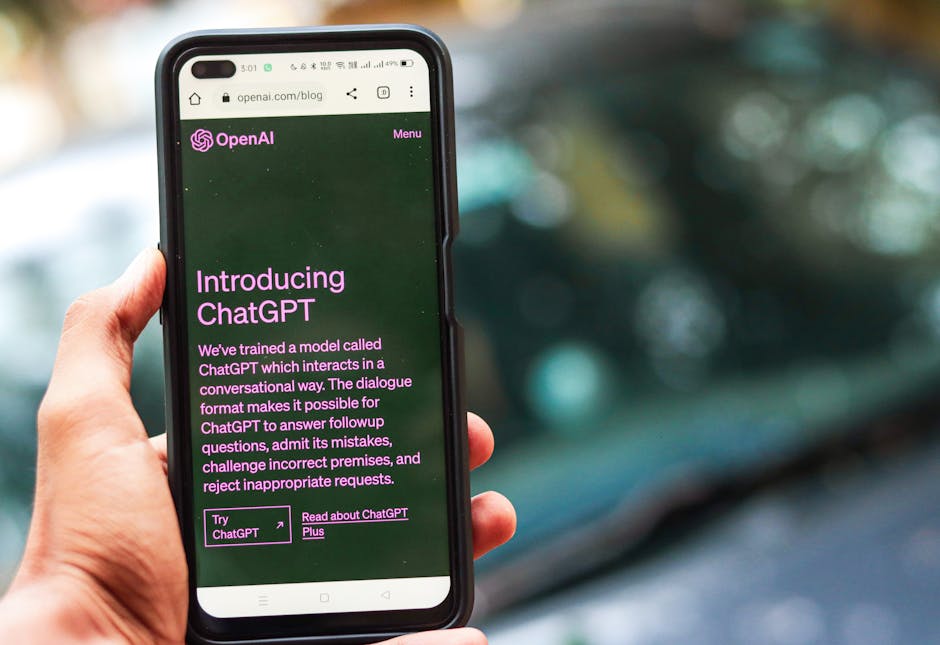The Serendipity Engine: Unlock AI Collaboration for Business Growth
In today’s fast-paced business world, the concept of serendipity—making fortunate discoveries by accident—has evolved with the advent of AI tools and automation. Gone are the days when collaboration and innovation relied solely on chance encounters or random brainstorming sessions. Instead, businesses can now leverage AI to create environments ripe for unexpected innovations by harnessing data from diverse sources. Imagine an office where creative sparks fly, not just from water cooler conversations, but through the strategic alignment of data-driven insights, employee interactions, and social media trends. Let’s delve into the fascinating world of “The Serendipity Engine” and see how AI can foster unexpected collaborations and drive innovation.
AI: The Catalyst for Unanticipated Partnerships

AI tools offer a unique opportunity for businesses to break down silos and bridge departmental divides. In many organizations, information and insights are often trapped within specific teams, leading to missed opportunities for collaboration. However, AI’s ability to analyze vast amounts of data—from employee performance metrics to social media activity—can illuminate hidden patterns and connections. For example, through the analysis of team interactions and communication channels, AI can identify which employees are likely to generate the most compelling creative ideas when partnered together.
This process not only enhances employee engagement but also leads to more remarkable outcomes. According to a report by McKinsey, organizations that are agile and adopt AI-driven insights are 3x more likely to achieve better outcomes in innovation. By breaking down barriers and fostering relationships across departments, companies can use AI tools to facilitate connections that would typically occur only through chance meetings.
For more insights into how AI can enhance collaboration, check out harnessing AI for collaborative problem-solving.
Identifying Opportunities Through Diverse Datasets

Today’s businesses are awash with data. However, not every organization effectively utilizes this invaluable asset. AI tools excel at sifting through diverse datasets, from customer interactions and market trends to employee feedback and engagement scores. This analysis can highlight unforeseen opportunities for collaboration and innovation.
For instance, AI algorithms can help uncover which products or services are trending in the market, allowing businesses to align their offerings with customer demand. Similarly, analyzing internal feedback can reveal where teams struggle or where their expertise could be complemented by another department, thus creating a fertile ground for unexpected synergies.
External datasets from social media trends can also play a significant role. By identifying which topics resonate most within a target audience, businesses can tweak their strategies and collaborations to meet evolving needs. This approach transforms data into actionable insights, encouraging businesses to seize opportunities that might otherwise remain hidden.
Looking for real-world examples? Consider the ways in which successful brands have pivoted by leveraging AI-driven market analysis. Companies that embrace these strategies can stay ahead of the competition and foster innovative partnerships.
Unleashing Creativity by Breaking Down Silos

One of the primary advantages of implementing AI in the workplace is its ability to break down silos and promote cross-department collaboration. Traditional business structures often foster compartmentalization, hindering communication and the sharing of ideas. With AI, organizations can create a more interconnected environment where employees are encouraged to share insights, voice concerns, and brainstorm collectively.
Imagine an organization where marketing, sales, and product development teams can access a real-time dashboard that showcases project metrics, customer feedback, and industry trends. That kind of transparency not only enhances understanding but also fosters creative collaboration that can lead to innovation. Employees can combine their knowledge and skills, creating solutions that none could achieve independently.
In this dynamic landscape, companies need to prioritize platforms that support collaboration. Utilizing technologies that integrate AI with existing work tools can make it easier to share data and insights, promoting a culture of openness and innovation. The end result? A more engaged workforce, heightened creativity, and the potential for groundbreaking ideas.
For more on how to break silos using AI, check out transforming remote collaboration with AI-driven tools.
Strengthening Customer Relations Through AI Insights

Customer engagement is a vital aspect of any successful business strategy. AI’s ability to analyze customer behavior and preferences in real-time enables organizations to foster deeper connections with their clients. By understanding the digital footprints left behind by customers, businesses can anticipate their needs, identify pain points, and deliver personalized experiences that resonate.
For example, an AI tool can analyze purchase histories combined with social media activity to predict purchasing trends. By using these insights, businesses can send targeted offers to their customers at precisely the right moment, enhancing engagement and loyalty. The integration of AI not only improves customer satisfaction but also strengthens the relationship between a brand and its clients.
Moreover, AI can empower customer service teams by providing them with enhanced tools for communication and problem resolution. AI-driven chatbots and virtual assistants can handle preliminary inquiries, freeing human agents to focus on more complex customer issues—this streamlining not only enhances productivity but also ensures a more satisfying customer experience.
Explore further the emotional depth of customer interactions with AI in our article on how AI redefines customer service relationships.
Revolutionizing Employee Engagement with AI Tools

One of the lesser-known yet powerful benefits of AI is its potential to boost employee engagement. By using AI tools to analyze employee performance metrics, feedback, and sentiments, businesses can gain a clearer understanding of staff morale and engagement levels.
Imagine having an AI system that can provide insights into team dynamics or even predict employee turnover rates based on engagement scores and performance evaluations. Such intelligence allows HR teams to proactively address issues, create targeted employee engagement programs, and foster an inclusive environment that keeps talent fulfilled and dedicated.
Additionally, AI-powered gamification elements can be integrated into daily tasks to make work more engaging. By introducing elements of game design—such as rewards, competition, and collaboration—companies create an environment where employees feel motivated and inspired. Such strategies can create a culture where creativity thrives, leading to spontaneous and innovative ideas.
For a deeper look at enhancing employee engagement through AI, you might find value in exploring AI insights for employee engagement.
AI-Driven Innovation: Lessons from Real-World Applications
AI’s role in fostering unexpected innovations isn’t just theoretical. Numerous organizations have successfully implemented AI tools to transform their operations and culture. For instance, Dell Technologies implemented AI analytics to enhance their supply chain operations, enabling faster decision-making and greater efficiency.
Similarly, Unilever adopted AI-driven insights on consumer behavior to personalize marketing strategies, resulting in increased customer engagement and sales—their employing predictive analytics paved the way for collaboration across teams that would not have previously occurred.
Such cases exemplify how AI tools enable organizations to become more innovative and responsive to market changes. As companies venture into using AI for innovative solutions, they need to focus on cultivating a culture that embraces experimentation and creativity—qualities critical for harnessing the true power of AI in business.
For further reading on how AI can act as a catalyst for innovation, see our informative piece on unlocking future trends through AI.
Cultivating an Agile Business Culture
As businesses strive to innovate and adapt, cultivating an agile culture is essential. An agile business is characterized by a flexible mindset, a willingness to embrace change, and a proactive approach to challenges. This is where AI once again plays a pivotal role.
By using AI tools to solicit real-time feedback from employees and customers, organizations can pivot quickly when necessary. Whether it’s adjusting product features, improving service offerings, or refining internal processes, AI gives businesses the capability to respond to emerging trends swiftly.
Moreover, fostering an agile culture means encouraging team experimentation. When organizations support a philosophy where taking calculated risks is the norm, the likelihood of innovations suddenly materializing increases. Integration of AI not only facilitates risk-taking by providing valuable insights but also creates transparency that encourages accountability among team members.
The power of an agile culture coupled with smart AI tools results in businesses that stay ahead of the competition and thrive in dynamic markets.
Final Thoughts: Embracing Serendipity with AI
In conclusion, the integration of AI into business operations brings forth numerous opportunities for fostering unexpected collaborations and driving innovation. By leveraging AI tools, organizations can break down silos, enhance employee engagement, analyze diverse datasets, and strengthen customer relations.
Creating an environment conducive to serendipity is as much about mindset as it is about technology. Leaders must champion collaboration, encourage experimentation, and utilize AI-driven insights to uncover hidden opportunities. By choosing to embrace the serendipity engine, businesses are not only poised for growth but can also thrive in an ever-evolving landscape.
To explore how you can implement AI tools in your business for maximum impact, begin your journey with the valuable insights available from uncovering hidden opportunities with AI.



